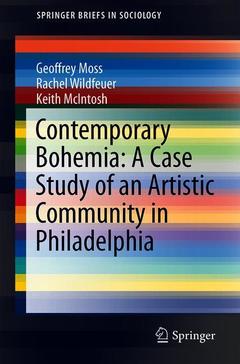Contemporary Bohemia: A Case Study of an Artistic Community in Philadelphia, 1st ed. 2019 SpringerBriefs in Sociology Series

This book presents an investigation and assessment of an artistic community that emerged within Philadelphia?s Fishtown and the nearby neighborhood of Kensington. The book starts out by examining historical and sociological work on bohemia, and then provides a detailed history of greater Philadelphia and the Fishtown/Kensington region. After analyzing the ways in which Fishtown/Kensington?s artistic community maintains continuity with bohemian tradition, it demonstrates that this community has decoupled traditional bohemian practices from their anti-bourgeois foundation. The book also demonstrates that this community helped generate and maintains overlapping membership with a larger community of hipsters. It concludes by defining the area's artistic community as an artistic bohemian lifestyle community, and argues that the artistic activities and cultural practices exhibited by the community are not unique, and have significant implications for urban artistic policy, and for post-industrial urban society.
Chapter 1. Introduction.- Chapter 2. Bohemia: Classic and Contemporary.- Chapter 3. The Fishtown/Kensington Artist.- Chapter 4. Maintaining Continuity With Bohemian Tradition.- Chapter 5. The Fishtown Hipster.- Chapter 6. Bohemian But Not Anti-Bourgeois.- Chapter 7. The Artistic Bohemian Lifestyle Community.- Chapter 8. Conclusion: Going Beyond Ordinary.
Brings together insights from academic and non-academic writings on Bohemia
Argues that the artistic bohemian lifestyle community is neither anti-bourgeois nor ordinary
Provides rich insights into the lives of working artists and their impact on the urban environment
Date de parution : 05-2019
Ouvrage de 126 p.
15.5x23.5 cm
Thèmes de Contemporary Bohemia: A Case Study of an Artistic... :
Mots-clés :
The Study of Bohemian Communities; Fishtown Kensigton; Historical and Sociological Work on Bohemia; The Nature of Bohemia; History and Geography of Bohemia; Maintaining Continuity with Bohemian Tradition; Fishtown_Kensington’s Artistic Community; Cultural and Political Movements and Communities; Bohemian But Not Anti-Bourgeois; Bohemian Artistic Lifestyle Community; Artistic and Personal Creativity; urban geography and urbanism; urban politics
